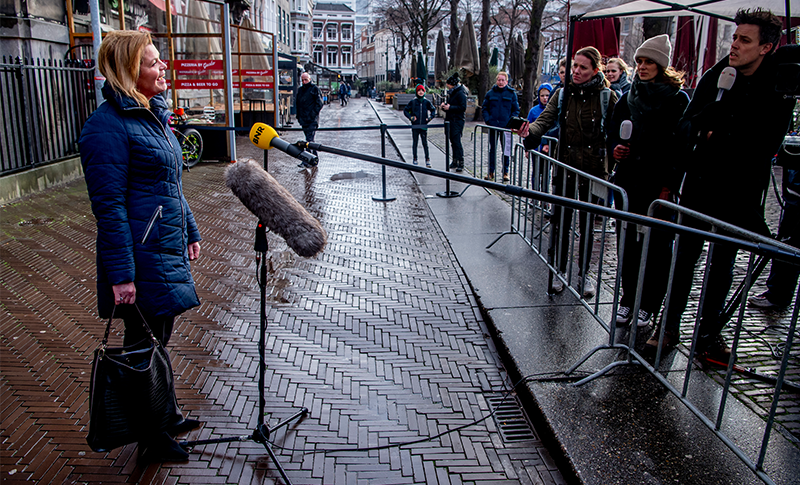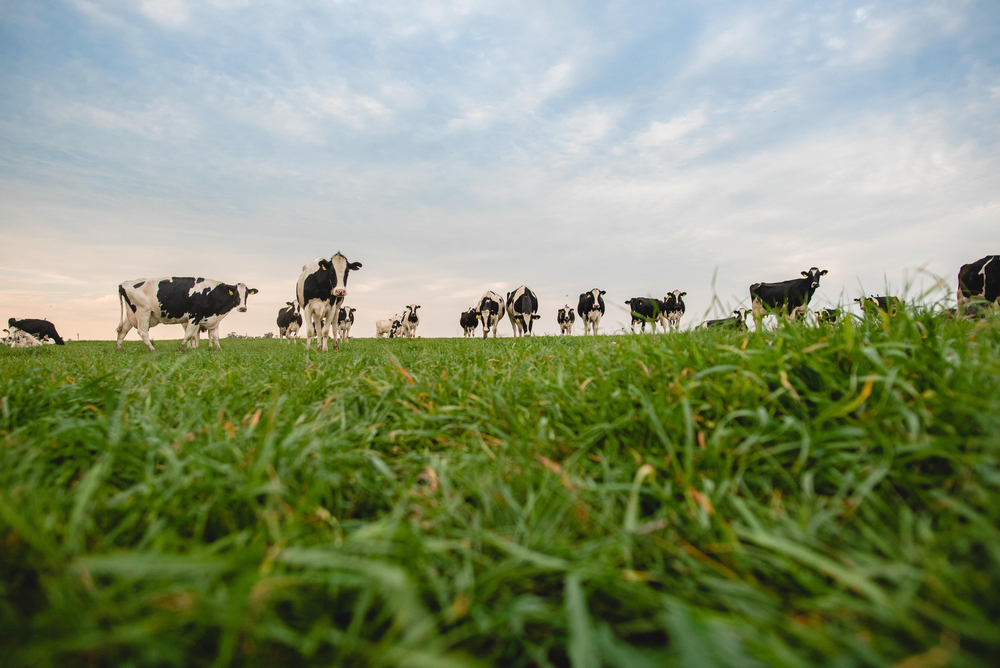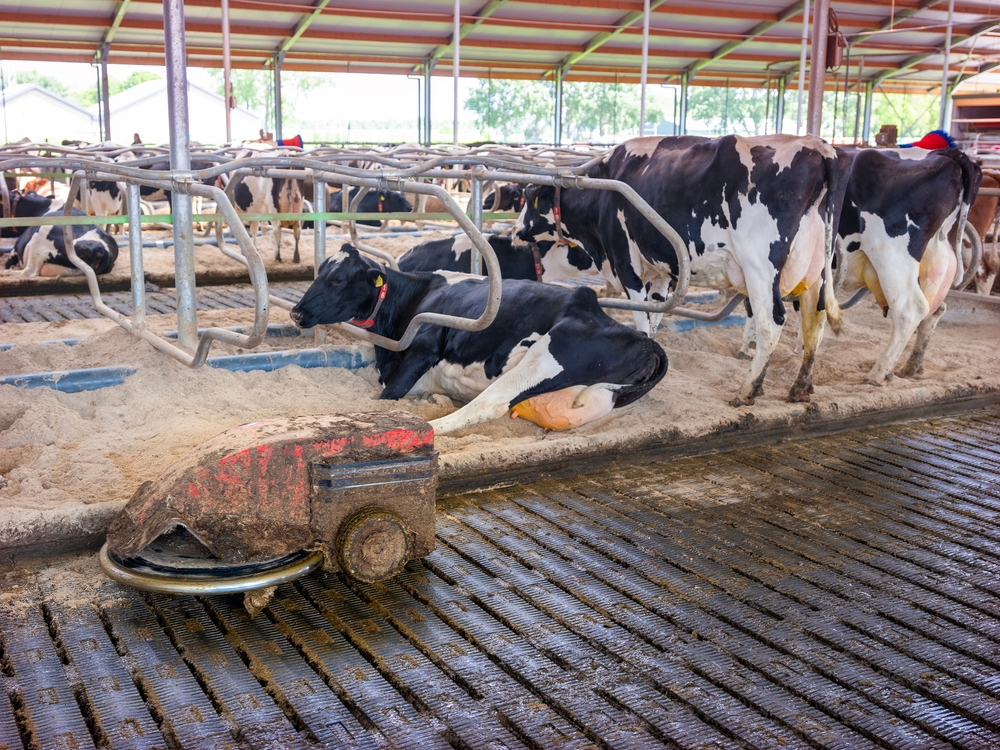By 2030, the new Dutch cabinet aims to reduce greenhouse gas emissions by 60 per cent and cut nitrogen emissions to a level at which three quarters of the nature in the country can recover. WUR advised the ministry of Agriculture, Nature and Food Quality on these challenges. Resource asked Ernst van den Ende, the new director of the Animal Sciences Group, how feasible the plans are.
What challenges lie ahead?
‘Nitrogen is crucial and was one of the biggest sticking points for the last cabinet. The nitrogen problem is hampering industry, housing construction and livestock farming, and nitrogen emissions must be cut so we can build and do business again. WUR is looking specifically at ammonia emissions from agriculture, especially livestock farming. We have kept repeating that we must address the climate challenge and water quality at the same time, since the Netherlands does not yet meet the standards of the Water Framework Directive. Take an integral approach so farmers get an overview of the issues.’
Which measures are good for nitrogen, the climate and water?
‘That can vary from one area to another. The issues on the Veluwe, where you’re dealing with nitrogen-sensitive nature, are different from those in the peatland areas, where the main problem is methane emissions from peaty soils. So our advice is: look for the best measures for each area. Ammonia emissions from livestock farms are deposited in the surrounding area, which is another reason why an area-specific approach is useful.’
How does the cabinet want to tackle it?
‘The coalition agreement mentions three measures: technical measures for reducing emissions on the farm; buying up and devaluing farmland to make extensive livestock farming possible; and buying out polluting farms. This is not easy to implement, however. The government would prefer to concentrate on buying up farms that are close to nature areas, because that is the most effective strategy. But that entails an expropriation process that can take years, whereas we want to cut the nitrogen surplus and methane emissions tomorrow. Voluntary buy-outs, with the farmer making the decision, are a less effective strategy but can be done more quickly. And you need on-farm innovations that the farmer can introduce quickly too.’
Is technology the solution?
‘Technology alone is not the solution. You need a combination of measures. Farms are closing down every year, and that helps. Farmers are installing new systems that reduce the ammonia emissions, and that helps too. And farms in peatland areas and close to nature areas are obliged to adopt more extensive farming methods so as to reduce emissions. That means reducing herd sizes, so livestock farmers need to develop new business models in which they get some income from nature management, water storage or landscape maintenance as well. The government must fund these kinds of public services.’
Where should livestock herds shrink?
‘There are going to be areas of the Netherlands in which livestock farmers must make far-reaching adjustments to meet nature-, water- and climate-related criteria. They will either have to farm less intensively or stop, and that is a bitter pill to swallow. A lot of farms are fairly sustainable, with a small environmental impact. The real problem is that we’ve got too many farms in a small area and between them they emit too many pollutants. In the Netherlands we want to do everything in a small area, but that’s impossible – we’ve got to make choices. The Remkes Commission, which studied the nitrogen problem, said the same: not everything can be done everywhere.’
Should the government decide what can be done where?
‘That is really tricky, because there are several different policy goals involved. We want more housing, we want more wind and solar farms in the interests of the energy transition, and, if you look at the EU’s Farm to Fork policy, we want 20 per cent of Dutch farms to be organic. It’s important to realize that organic farming is more extensive, so it requires more land. How do you ensure that the land that will be freed up when farmers are bought out is made available for extensive or organic farming, or for nature, rather than for data centres, solar farms or high-end villas? I don’t have the answer to that.’
What answer does WUR give them?
‘We supply the facts about how you can improve nature values in nature areas, and we develop options for farmers. Examples would be technical innovations, as well as concepts such as circular agriculture and nature-inclusive agriculture, which entail new business models for farmers too. And we are helping to shape this in area-focussed processes. These processes are very important now, because we’ve got to overhaul the spatial organization of the Netherlands to meet the nitrogen, climate and water challenges. We are eager to play our part in that.’
Should the provincial councils take the lead?
‘Central government has shifted a lot of powers in the areas of agriculture, nature and the environment to the provincial authorities. They’ve got to come up with plans. Edo Gies (senior researcher into Land Use Dynamics, ed.) and Tia Hermans (head of research domain agro & nature, ed.) have already done a study for the Province of Gelderland on how the nature targets can be achieved. They’ve gone for a combination of technical measures on the farm and targeted buying out of livestock farms in the Gelderse Vallei. But here again, the question is: will the government succeed in buying out the biggest polluters or are you better off negotiating with the farmers about shifting towards more extensive farming methods for the benefit of nature?’
Is the nitrogen problem exposing fundamental problems in our food system?
‘We are always talking about the farmers, but at root, our consumption patterns have a negative influence on nature and the climate too. If we drive to the supermarket, we emit a lot of CO2. If a conscious consumer from an affluent suburb drives their SUV to an organic farm shop at the weekend, the same thing happens. If the demand for food doesn’t change, you can reduce livestock herds but nothing will really change.’
Because?
‘You just shift the problem elsewhere. If Dutch agriculture shrinks a lot, food gets imported, and you’ll just have to wait and see how sustainable those products are. We are quick to say, “food needs to cost more in the Netherlands”, but if that means shoppers in the supermarket end up choosing meat from Brazil or from the US, you’re just moving the nitrogen and climate problems elsewhere. We talk a lot about the export position of our agriculture, but we need to talk about its import position as well. How dependent do we want to be on food and raw materials from abroad?’
Horticulture, the most profitable and innovative food sector, does not feature in the coalition agreement.
‘True. The highest incomes are earned from greenhouse vegetable and ornamental plant cultivation, as we always see from the annual income figures for agriculture and horticulture. Greenhouse horticulture uses a lot of gas and faces the massive challenge of switching to more sustainable energy sources. But it is making headway. Some horticulturalists are already climate-neutral because they buy CO2 from industry in Rotterdam. A group of horticulturalists in Noord Holland have switched to geothermal power and are using heat from the Microsoft data centre to heat their greenhouses. That strikes me as a lot more sustainable than the planned new data centre in Zeewolde. Spatial planning is needed in such cases too, so that the government locates data centres near to greenhouses and residential neighbourhoods that can make use of the heat they generate.’
The coalition agreement in a nutshell
- The cabinet wants to cut CO2 emissions by 60 per cent by 2030. A 35-billion-euro climate fund will be established for the energy transition, industry and transport, so the energy supply is climate-neutral by 2030. The agriculture sector must concentrate on reducing the use of artificial fertilizer, methane emissions from cows, and greenhouse gas emissions from peatland areas;
- A 25-billion-euro transition fund will be established for area-specific nature, climate and water policy. Nitrogen emissions must be halved by 2030, so that three quarters of Dutch nature areas are brought below the critical deposition value;
- More than six billion euros is available for buying up farms and livestock; nearly six billion for downgrading from intensive to extensive farmland; two billion for nature-inclusive agriculture; and one billion for innovative barn systems;
- A land bank will be established for moving livestock farms and turning farmland into less intensively farmed ‘landscape land’ on which farmers provide ecosystem services as well as growing food;
- The transition from chemical pesticides to integrated crop protection will be accelerated.

 5 January 2022- Christianne van der Wal-Zeggelink (VVD), minister of Nature and Nitrogen, on her way to talk with formateur Mark Rutte.
She will have to tackle the nitrogen problem in the coming years. Photo ANP/Robin Utrecht
5 January 2022- Christianne van der Wal-Zeggelink (VVD), minister of Nature and Nitrogen, on her way to talk with formateur Mark Rutte.
She will have to tackle the nitrogen problem in the coming years. Photo ANP/Robin Utrecht 

